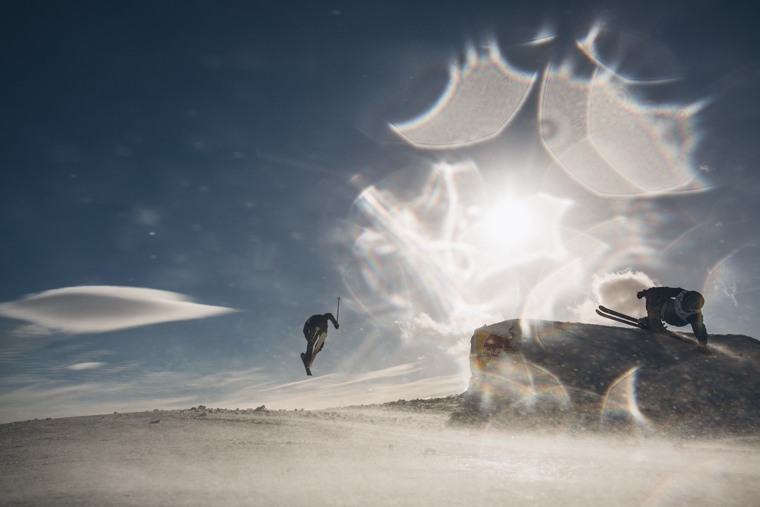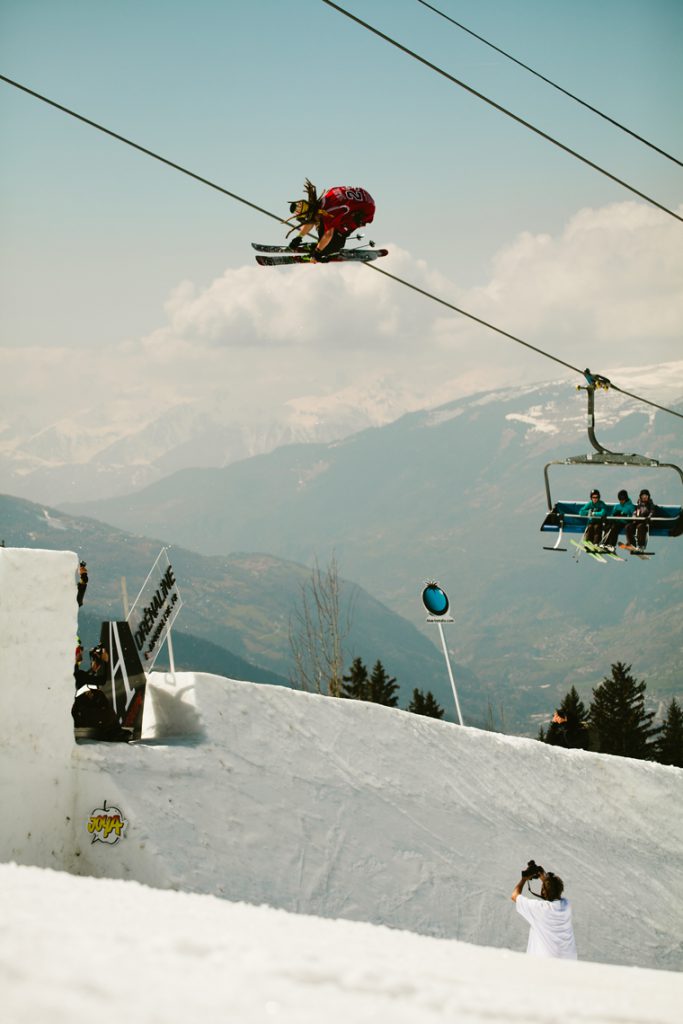How to shoot the perfect ski photo


I don’t think there is a ‘perfect’ ski photo. You do, however, know when you see the perfect image for you. Whether that photo be a massive huck, an Alaskan spine, a pillow line through a cedar forest or the deepest Japanese pow turn, you remember those photos, you show them to your friends; hell, you might even buy a print and put it in your home. For many people, this acts as inspiration to ‘try their hand at this photography lark’ on their next ski trip.
The thing about shooting photos of skiing compared to, say, mountain biking or Extreme Ironing (remember that?!), is that you often only get one chance to ‘get the shot’. Okay, that might be a slight exaggeration, but if you have hiked all afternoon to reach an untracked ridge that gets the best of the golden evening light, then you really want to nail the photo first try.
We are getting ahead of ourselves. Before you find yourself on that powder-loaded ridge bathed in golden, late-winter light with your camera in hand, here are a few tips to help you create eyeball-pleasing ski images.
Some winters there are bluebird days aplenty but often, especially if it’s snowing a lot, they are few and far between. If you are only out in the mountains for a week or two a winter you want to maximise any blue-sky days you can get.
There’s an old winter lensmans tale called ‘Drinkin’ it blue’. It originated in Alaska, when heli-filming crews needed the weather to clear to go shoot. The team would set to, drinking all the booze they could lay their hands on. Only once the entire crew was duly inebriated and sure of a horrendous hangover in the morning would fate grant them a day of blue skies and perfect weather. And a perfect hangover.
The best light on these ‘perfect’ days is the frigid pink of the early morning and the rich golden light of sunset. Don’t get me wrong, big pow turns under azure blue skis are great, but if you want that really special image you gotta work for it. For end-of-day shots, first find out where the sun sets in relation to the hill, so you can plan where to stake out sunset. There’s nothing worst than hiking and waiting in the cold only to find the sun drops below a ridge before hitting you.

So, it’s storming out and you can’t see your arse from your elbow. What do you do? Hit the bar? Go home? No no, my friends. You go to the trees. The beauty about trees on storm days is that they are the only place you can still get great skiing, fresh turns every lap and be able to see where you’re going. Trees give you contrast from the all-consuming white of a storm and allow you to see the definition in the snow.
For photos, it’s often the best time to shoot in the trees. The storm or fog gives an unending feeling to the photos and by playing around with lines of sight through the trees you can get some really fun images.
Composition is a very personal thing; there are various ideas, the rule of thirds and so on, but I think the best thing to do is to try to compose a photo that’s pleasing to your eye, and worry about the rest later. To get the hang of this, lots of experimentation is needed.
It’s easy to over-complicate things, to try exhaustively to seek out that new angle or unique composition. Climbing up trees and burying yourself in the snow to get an alternative perspective is all well and good, but sometimes the best and most beautiful shot is the simplest. Straight on, dead centre skier, or a totally symmetrical image. Wes Anderson’s style is very popular these days, proving that simple symmetry when done well is incredible.
These two styles of shot, capable of being achieved on a point and shoot or an SLR, will see you right in many photograph situations. When shooting a wide-angle shot you have to think about what you want to capture in the image. Is it the vast landscape with a skier hidden in there somewhere? Or do you want to bring the viewer right into the action?
The sweet thing about wide shots is that you can make something benign – like a turn in a little patch of snow on the side of a piste – look amazing. If you get right in there and your mate slashes the turn right next to you, you’ll end up with some wild results. A classic is getting a rider to turn right in front of you at the top of a line – and by holding the camera high you can get a really exciting view of the line ahead and the skier beginning his/her descent.
The long shot is a lot more effective if you have a DSLR and a long lens (100mm+), but it is possible if your camera has an optical zoom of some kind. The long shot is used a lot in ski photography often because the photographer wants the skier to be prominent in the frame while pulling distant backdrops closer or incorporating foreground such as other ridge lines, trees or even other mountains. You can get up close and personal with a long shot focusing in on just the head of the skier or the skis as they are set for a turn. You can also use interesting lines of sight and slower shutter speeds to blur everything but the subject.

Whatever anyone tells you, there are no rules in photography. Try whatever you think might make a cool photo; some will work and some won’t. But you will have fun and you will get really interesting and weird and funny pictures doing it. The technical side is easy enough to learn but in the end you will still love the shots that you over-exposed or blew the focus on. Look at as many photos as you can too; try to emulate your favourites, work out how photos were taken and make up new ways yourself. The best thing is that the more photos you take the more you want to get out there on those storm days, get up at dawn on bluebird ones and have more adventures with your mates and your camera. FL